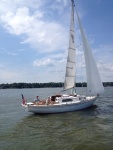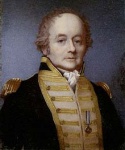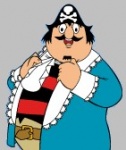In early July 1812, an American squadron out of New York sailed north looking for an British squadron out of Halifax. Just east of the Isle of Shoals on the New Hampshire/Maine border, the American squadron found the British squadron looking for them.
The wind is blowing across the short width of the board, from the islands.
There will be more pictures to follow once Eric has a chance to send them to me.







 Reply With Quote
Reply With Quote







Bookmarks